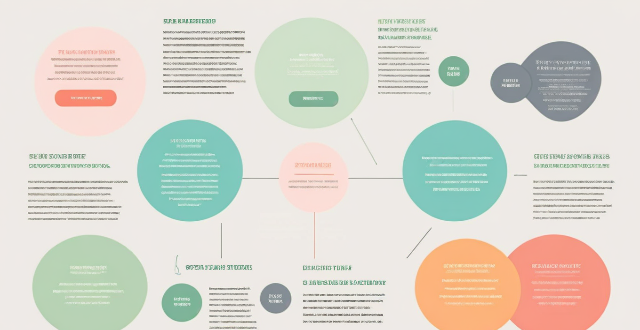Portfolio Diversify

How can I diversify my portfolio with bond investments ?
Diversifying your portfolio with bond investments can reduce investment risk and provide a steady stream of income. There are several types of bonds, including government, corporate, municipal, and foreign bonds, each with its own characteristics and risks. Bond mutual funds and ETFs offer automatic diversification across multiple issuers and types of bonds. When investing in bonds, consider factors such as credit quality, interest rate risk, inflation risk, and liquidity. To effectively diversify your portfolio with bonds, allocate a portion of your portfolio to bonds, invest in different types of bonds, consider bond maturities, and rebalance regularly. Consulting with a financial advisor can help determine the best bond strategies for your individual financial goals and risk tolerance.

How do I diversify my cryptocurrency portfolio ?
Diversifying a cryptocurrency portfolio involves understanding the importance of spreading risk, setting clear investment goals, researching different cryptocurrencies, allocating based on risk tolerance, considering dollar-cost averaging, staying updated with market trends, rebalancing periodically, using a reliable crypto exchange, prioritizing security, and seeking professional advice when needed. This strategy helps to mitigate the impact of volatility and potentially maximize returns over the long term.

How do I get started with bond investing ?
Bond investing is a popular way to diversify your portfolio and earn a steady income. Here are some steps to help you get started: 1. Understand the basics of bonds. 2. Determine your investment objectives. 3. Choose the right type of bond for you. 4. Consider the duration of the bond. 5. Research and select brokers or intermediaries. 6. Diversify your portfolio by investing in various types of bonds issued by different entities. 7. Monitor your investments regularly and adjust your portfolio as needed based on changing market conditions or personal circumstances.

How can I diversify my portfolio with different financial products ?
Diversifying your portfolio with different financial products is crucial for managing risk. Here's a summary of the key strategies: 1. **Stocks**: Invest in different industries, company sizes, and both growth and value stocks. 2. **Bonds**: Purchase bonds with varying maturities, including corporate, government, and municipal bonds. Consider bond funds or ETFs for broader exposure. 3. **Mutual Funds and ETFs**: Invest in funds focusing on different asset classes, geographical regions, or sectors like technology or healthcare. 4. **Real Estate**: Include options like direct ownership, REITs, or real estate syndications for potential rental income and as a hedge against inflation. 5. **Commodities and Precious Metals**: Add physical commodities, futures, options, or commodity-focused ETFs to serve as a store of value during inflationary periods. 6. **Alternative Investments**: Allocate a portion of your portfolio to assets like private equity, hedge funds, or collectibles for unique opportunities outside traditional markets. 7. **International Exposure**: Expand beyond domestic markets through foreign stock markets, international mutual funds or ETFs, and emerging market investments. Diversification requires a thoughtful approach to balancing risk and reward across various asset classes and markets, considering investment goals, risk tolerance, and time horizon.

What is the significance of rebalancing an investment portfolio ?
Rebalancing an investment portfolio is a crucial aspect of maintaining a well-diversified and risk-appropriate investment strategy. It involves periodically adjusting the asset allocation of your portfolio to align with your original investment goals and risk tolerance levels. The significance of rebalancing an investment portfolio includes maintaining diversification, controlling risk exposure, and staying disciplined. The frequency of rebalancing depends on various factors such as your investment goals, risk tolerance, and market conditions. Rebalancing an investment portfolio involves several steps, including determining your target allocation, evaluating your current allocation, selling off high-performing assets, reinvesting proceeds into underperforming assets, and reviewing and adjusting your portfolio regularly.

How do I create a diversified portfolio in the stock market ?
Creating a diversified portfolio is an essential strategy for mitigating risk and maximizing returns in the stock market. Here are some steps to help you create a diversified portfolio: 1. Determine your investment goals, including factors such as your risk tolerance, investment horizon, and financial objectives. 2. Allocate assets across different asset classes, such as stocks, bonds, cash, and other securities. 3. Select securities within each asset class that align with your investment goals and are not highly correlated with each other. 4. Rebalance your portfolio regularly to maintain your desired asset allocation. 5. Monitor the performance of your portfolio and make adjustments if necessary. By following these steps, you can create a well-diversified portfolio that aligns with your investment goals and helps you achieve long-term financial success.

How can I protect my growing wealth from market fluctuations ?
Market fluctuations are a natural part of any investment journey. However, as your wealth grows, it becomes increasingly important to implement strategies that can help protect your assets from the ups and downs of the market. Here's how you can do it: - Diversify Your Portfolio - Use Hedging Strategies - Stay Updated on Economic Indicators - Regularly Review and Rebalance Your Portfolio - Work with Financial Advisors

How does gold investment work ?
Gold investment is a popular way to diversify your portfolio and hedge against inflation, offering various forms such as physical gold, ETFs, mutual funds, mining company stocks, futures, and options. It provides benefits like hedging against inflation, portfolio diversification, and acting as a safe haven during crises but also involves risks including price volatility and storage costs. To start investing in gold, one should educate themselves, determine their investment goals, choose the right type of investment, allocate a budget, research vendors/brokers, and monitor their investment.

How can women build a diversified portfolio to minimize risks and maximize returns ?
The article provides a comprehensive guide on how women can build a diversified portfolio to minimize risks and maximize returns in the stock market. It emphasizes the importance of education, starting early, setting clear goals, diversifying investments across different asset classes, industries, and geographic regions, rebalancing regularly, and considering professional advice when needed. By following these tips, women can create a strong foundation for long-term financial success.

How do I start investing in gold ?
Investing in gold can be a great way to diversify your portfolio and hedge against inflation. Here are some steps to help you get started: 1. Determine Your Investment Goals 2. Research Different Ways to Invest in Gold 3. Choose a Reputable Broker or Dealer 4. Consider the Cost of Investing in Gold 5. Keep an Eye on Market Conditions 6. Diversify Your Portfolio

What role does real estate play in a retirement portfolio ?
The text discusses the role of real estate in a retirement portfolio, highlighting its potential benefits such as income generation through rental income and appreciation, serving as an inflation hedge by maintaining its value during inflationary periods and allowing rent adjustments, and providing diversification by being a non-correlated asset class and an alternative investment. It also outlines risks associated with real estate investments, including liquidity risk due to the illiquid nature of properties, market risk due to fluctuating property values influenced by local market conditions, and management responsibilities that come with owning rental property. The conclusion emphasizes the importance of considering these advantages and risks when incorporating real estate into a retirement strategy, along with the need for proper planning and consideration of personal circumstances.

How can investors ensure that their portfolios align with global climate goals ?
Investing in alignment with global climate goals is crucial for a sustainable future. Investors can ensure their portfolios reflect these objectives by understanding the Paris Agreement's goals, assessing current portfolio alignment, shifting investment strategies towards sustainable and impact investing while divesting from high-risk sectors, engaging with companies on sustainability issues, regularly monitoring and reporting on portfolio alignment, collaborating with other investors, and staying informed through continuous learning. This approach helps support a transition to a low-carbon economy while achieving competitive financial returns.

How do I adjust my investment strategy during economic downturns ?
Adjusting Investment Strategy During Economic Downturns: - **Diversify Your Portfolio**: Allocate across stocks, bonds, and cash equivalents; invest in different sectors and international markets. - **Rebalance Your Portfolio**: Monitor performance and composition regularly; rebalance to maintain diversification. - **Focus on Quality Stocks**: Choose companies with strong financials, stable earnings, and resilient business models. - **Consider Bonds and Other Fixed Income Securities**: Invest in government, corporate, or municipal bonds for stability and potential returns. - **Stay Disciplined and Avoid Emotional Decisions**: Stay calm, focus on long-term goals, and avoid herd mentality.

How much money should I invest in cryptocurrencies ?
Investing in cryptocurrencies has become a popular trend, but determining how much money to invest can be challenging. Factors such as risk tolerance, investment goals, market conditions, and the need for diversification should be considered before making any investment decisions. It is important to carefully consider these factors and only invest what you are comfortable losing, as investing in cryptocurrencies carries risks.

How do I invest in tech stocks as a beginner ?
Investing in tech stocks can be a profitable venture, but it's important to approach it with caution and knowledge. Here are some steps to help you get started: 1. Educate yourself on the basics of the stock market and the technology sector. 2. Set investment goals based on your risk tolerance and desired returns. 3. Choose a reputable brokerage firm that offers access to the stock market. 4. Research individual tech stocks by looking at financial statements, earnings reports, and news articles. 5. Diversify your portfolio by investing in multiple tech stocks across different industries and companies. 6. Monitor your investments and stay informed about industry developments and company news. 7. Remember that investing in stocks involves risks, including the possibility of losing money. Do your own research and consult with a financial advisor before making any investment decisions.

What is the role of asset allocation in an investment strategy ?
Asset allocation is a crucial component of any investment strategy, involving dividing your portfolio among different asset classes based on your financial goals, risk tolerance, and investment horizon. It plays a vital role in determining the overall performance of your portfolio by helping you manage risk and maximize returns through diversification. To determine your asset allocation, consider your financial goals, risk tolerance, investment horizon, and consult with a financial advisor. Review and adjust your asset allocation regularly as your circumstances change and new opportunities arise.

How do I invest in wind energy projects ?
Investing in wind energy projects can be a lucrative opportunity, but requires careful consideration and planning. To ensure success, it is crucial to understand the industry, research potential projects, evaluate their feasibility and financial viability, conduct due diligence, choose a suitable investment strategy, secure financing, form partnerships, negotiate terms, monitor progress, and diversify your portfolio. By following these steps, you can make informed investment decisions and contribute to a sustainable future for generations to come.

How do interest rates affect credit management strategies ?
Interest rates significantly influence credit management strategies by affecting the cost of borrowing, returns on savings, and serving as a tool for monetary policy. To mitigate their impact, individuals and businesses can diversify their portfolios, consider short-term loans, refinance debt, and maintain good credit history.

How do I know if gold investment is right for me ?
Investing in gold can be a great way to diversify your portfolio and protect yourself from market volatility. However, it's important to consider whether this type of investment is right for you. Here are some factors to consider: Risk Tolerance: Gold is generally considered a safe haven asset, meaning that it tends to hold its value during times of economic uncertainty. However, like any investment, there is always some degree of risk involved. You should only invest in gold if you are comfortable with the potential risks and volatility of the market. Investment Goals: Are you looking to grow your wealth over time, or are you more interested in preserving your current assets? Gold has historically been a good store of value, but it may not provide the same growth potential as other investments. Consider your long-term goals and whether gold aligns with them. Market Conditions: The performance of gold can vary depending on market conditions. For example, during times of inflation or economic turmoil, gold may perform well as investors seek out safe haven assets. Keep an eye on market trends and conditions before making any decisions about investing in gold. Costs and Fees: Investing in gold can come with various costs and fees, including storage fees, insurance costs, and transaction fees. Make sure you understand all of these costs before investing. Additionally, consider the impact of taxes on your gold investments. Liquidity: While gold is generally considered a liquid asset (meaning it can be easily bought and sold), there may be times when it is difficult to find buyers or sellers at desirable prices. This could affect your ability to access your funds quickly if needed. Consider how much liquidity you need in your portfolio before investing in gold.

What factors should I consider before investing in gold ?
When considering investing in gold, it's importantWhen considering investing in gold, it's important define your investment goals, explore These factors will help you make an informed decision about whether gold is a suitable addition to your portfolio.

Is cryptocurrency a good investment for beginners ?
Cryptocurrency can be a good investment for beginners, but it is important to understand the risks and complexities involved before making any investment decisions. Advantages of investing in cryptocurrency include high returns, decentralization, and anonymity. Disadvantages include volatility, lack of regulation, complexity, and security risks. Tips for beginners investing in cryptocurrency include educating yourself, starting small, diversifying your portfolio, staying up-to-date, seeking professional advice, using reliable exchanges, keeping your private keys safe, monitoring your investments, being prepared for volatility, and having patience.

How do I choose the right stocks for long-term investment ?
When it comes to long-term investment, choosing the right stocks is crucial. Here are some key factors to consider: 1. Company Financials: Look for companies with consistent revenue growth, profitability, and manageable debt levels. 2. Industry Trends: Invest in industries with strong growth potential and companies with a competitive advantage. 3. Management Quality: Choose companies with experienced management teams who have a clear vision for the future. 4. Valuation: Consider the price-to-earnings ratio and price-to-book ratio to find undervalued stocks. 5. Dividends: If you're looking for regular income, consider stocks with a high dividend yield and consistent dividend growth. 6. Risk Tolerance: Diversify your portfolio and consider your risk tolerance when selecting stocks. By carefully considering these factors and conducting thorough research, you can select stocks that align with your investment goals and risk profile.

How can I protect my assets from creditors or lawsuits ?
When it comes to protecting your assets from creditors or lawsuits, there are several strategies you can consider. These strategies aim to safeguard your wealth and ensure that you have financial security in case of legal actions against you. Here are some key steps to take: ### 1. **Create a Trust** A trust is a legal entity that allows you to transfer assets into it for the benefit of a third party, known as the beneficiary. By placing your assets into a trust, they are no longer directly owned by you, making them less vulnerable to creditors or lawsuits. There are different types of trusts, such as: - Revocable Living Trust: You can modify or revoke this type of trust during your lifetime. - Irrevocable Trust: Once created, you cannot change or cancel this type of trust. - Special Needs Trust: Designed for individuals with special needs, this trust helps them qualify for government benefits while still having access to funds for other expenses. ### 2. **Establish Limited Liability Entities** Forming limited liability companies (LLCs) or corporations can help protect your personal assets from business-related debts and lawsuits. These entities act as separate legal entities, meaning that their liabilities do not extend to your personal finances. Examples include: - Single Member LLC: Suitable for sole proprietors looking to limit their personal liability. - Multi-Member LLC: Ideal for partnerships where multiple members contribute to the business. - S Corporation: Offers pass-through taxation and limits shareholder liability to their investment in the company. ### 3. **Purchase Insurance** Having adequate insurance coverage is essential in protecting your assets from unexpected events. Make sure you have the following types of insurance policies: - Liability Insurance: Covers damages or injuries caused by you or your property. - Umbrella Policy: Provides additional liability coverage beyond your standard policies. - Homeowner's Insurance: Protects your home and belongings from damage or loss due to various perils. - Auto Insurance: Covers damages and injuries related to vehicle accidents. ### 4. **Diversify Your Assets** Spreading your wealth across different asset classes can help minimize the impact of any single lawsuit or creditor claim. Consider investing in: - Real Estate Investment Trusts (REITs): Allows you to invest in real estate without owning physical property. - Stocks and Bonds: Diversify your portfolio with various securities to reduce risk. - Precious Metals and Cryptocurrencies: Non-traditional assets that may offer protection against market volatility. ### 5. **Consult with Professionals** Before implementing any asset protection strategy, it's crucial to consult with professionals who specialize in this area, such as attorneys, financial advisors, and accountants. They can guide you through the process, ensuring that you comply with all legal requirements and maximize the effectiveness of your chosen strategies.

What is the best way to invest in gold ?
This article explores the best way to invest in gold, discussing why one might want to consider adding gold to their portfolio and outlining different ways to invest in gold, such as physical gold, gold stocks and mutual funds, gold ETFs, and gold futures and options. The advantages and disadvantages of each method are discussed, and it is emphasized that the best way to invest in gold depends on individual investment goals, risk tolerance, and personal preferences.

What are the risks associated with investing in financial products ?
Investing in financial products can be a great way to grow your wealth, but it's important to understand the risks involved. Here are some of the key risks associated with investing in financial products: 1. Market risk refers to the possibility that an investment may lose value due to changes in market conditions. 2. Credit risk is the risk that a borrower or counterparty will fail to meet its obligations under a financial contract. 3. Interest rate risk is the risk that changes in interest rates will negatively impact the value of an investment. 4. Inflation risk is the risk that inflation will erode the purchasing power of your investments over time. 5. Liquidity risk is the risk that you may not be able to sell your investment quickly without affecting its price. 6. Currency risk is the risk that fluctuations in exchange rates will negatively impact the value of your investments. 7. Concentration risk is the risk that your portfolio is too heavily invested in a single asset class, sector, or geographic region. 8. Tax risk is the risk that changes in tax laws or regulations will negatively impact the after-tax returns of your investments. 9. Fraud risk is the risk that you may be victimized by fraudulent activities related to your investments.

How do political events affect the stock market, and how can they be analyzed ?
This comprehensive analysis explores the impact of political events on the stock market, including economic policies, regulatory changes, international relations, and elections. It also provides strategies for analyzing their potential effects, such as staying informed, diversifying your portfolio, using technical and fundamental analysis, and monitoring sentiment indicators.

How can I protect my retirement savings from inflation ?
Inflation can significantly erode the value of retirement savings over time. To protect your nest egg, consider diversifying your portfolio with stocks, real estate, and commodities. Investing in inflation-protected securities (TIPS) and fixed index annuities can also help maintain purchasing power. Global diversification, particularly in emerging markets, offers growth opportunities and hedges against local economic conditions. Maintaining a cash reserve for liquidity and short-term needs is crucial, as is regularly rebalancing your portfolio to stay on track with your goals. Delaying Social Security benefits can lead to higher monthly payments, acting as longevity insurance. Increasing contributions, especially if matched by employers, and working with a financial advisor for personalized guidance are other effective strategies. By employing these tactics, you can safeguard your retirement savings from inflation and ensure a comfortable retirement.

What role does investing play in achieving financial freedom ?
Investing plays a crucial role in achieving financial freedom by growing wealth, diversifying portfolios, and protecting against inflation. Strategies include starting early, making consistent contributions, adopting a long-term perspective, and managing risk effectively.

Is it better to invest in stocks or bonds for retirement ?
The article discusses the advantages and disadvantages of investing in stocks and bonds for retirement. Stocks offer higher potential returns, diversification, and can serve as an inflation hedge, but come with higher risks and no guaranteed income. Bonds provide lower risk, predictable income streams, and diversification, but offer lower potential returns and are sensitive to interest rate changes. The key is finding the right balance between risk and reward based on individual circumstances and investment goals, and consulting with a financial advisor to create a customized retirement plan.

What are some proven strategies for long-term wealth accumulation ?
Long-term wealth accumulation is a goal for many individuals, and there are several proven strategies that can help achieve this objective. Here are some of the most effective approaches: 1\. Start Early: The earlier you start saving and investing, the more time your money has to grow through compound interest. 2\. Live Below Your Means: Spend less than you earn and save the difference. 3\. Invest Wisely: Choose investments that align with your goals, risk tolerance, and time horizon. Diversify your portfolio to spread risk and maximize returns. 4\. Pay Off High-Interest Debt: High-interest debt like credit card balances can be a significant obstacle to wealth accumulation. Paying off these debts should be a priority. 5\. Increase Your Income: Increasing your income can provide more resources for saving and investing, which can help accelerate wealth accumulation. 6\. Plan for Retirement: Retirement planning is an essential component of long-term wealth accumulation, ensuring you have enough funds to support yourself during your golden years. 7\. Protect Your Wealth: Ensure that your hard-earned wealth is protected against unexpected events like lawsuits, accidents, or health issues.